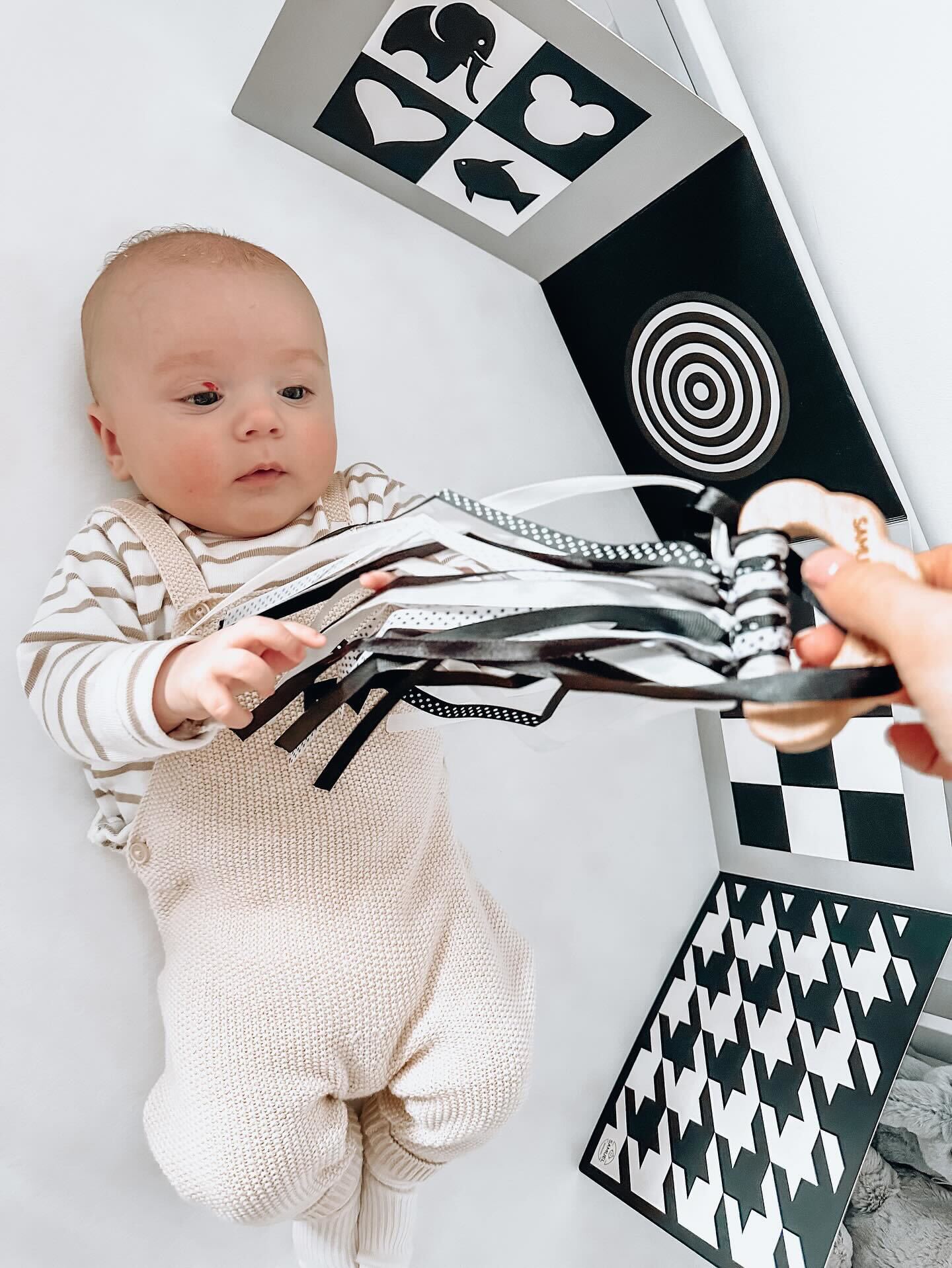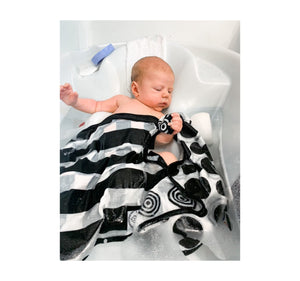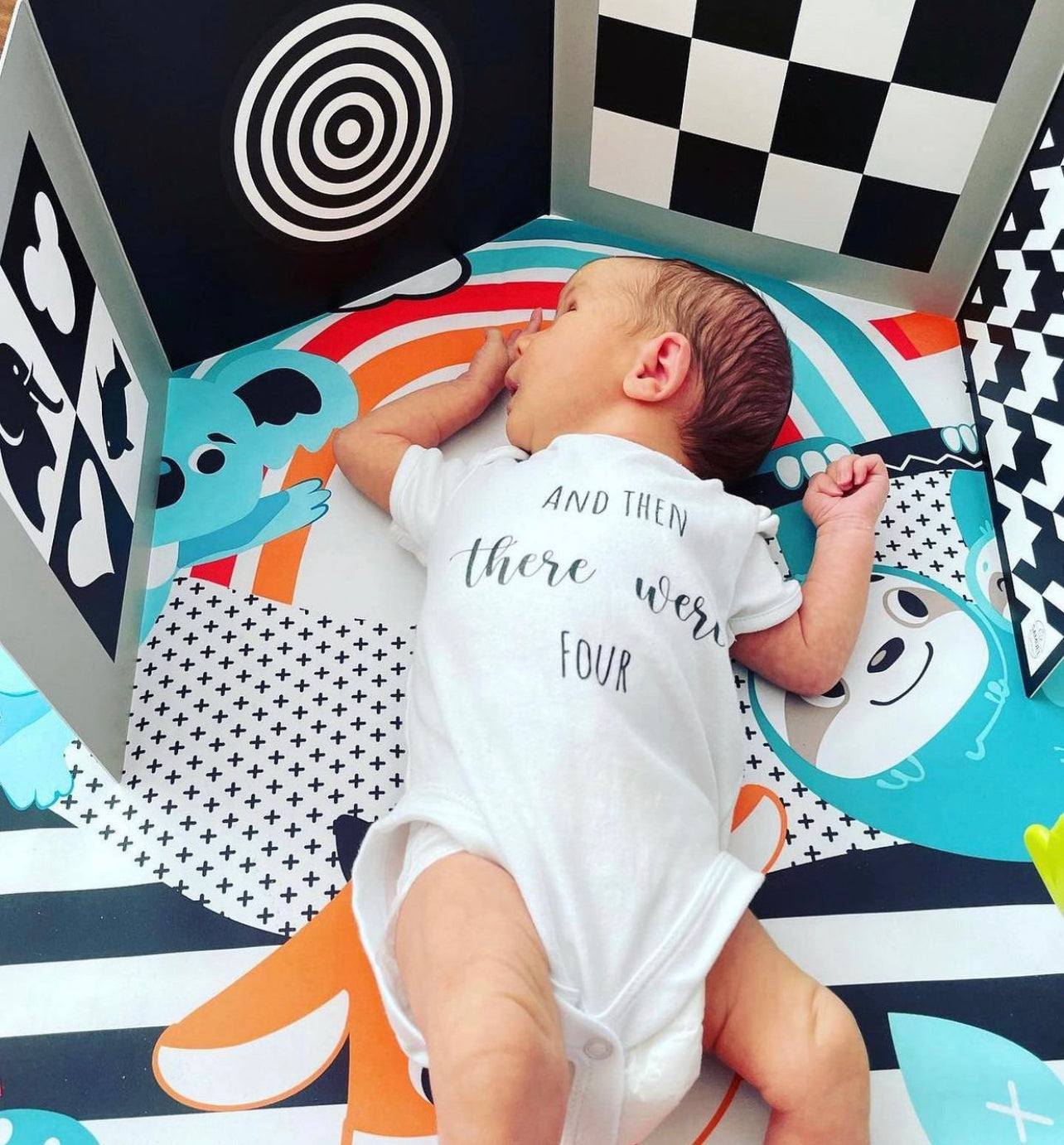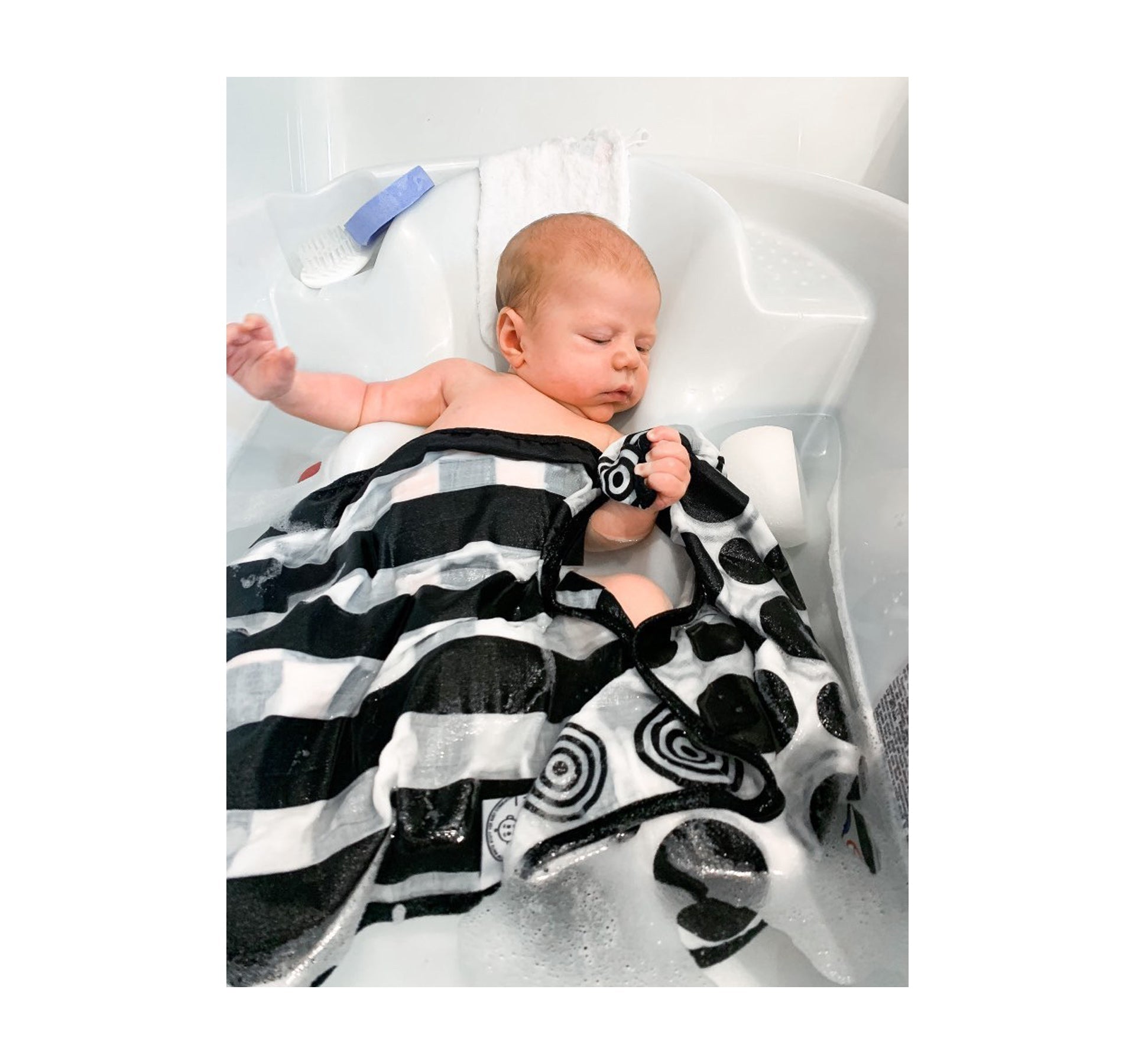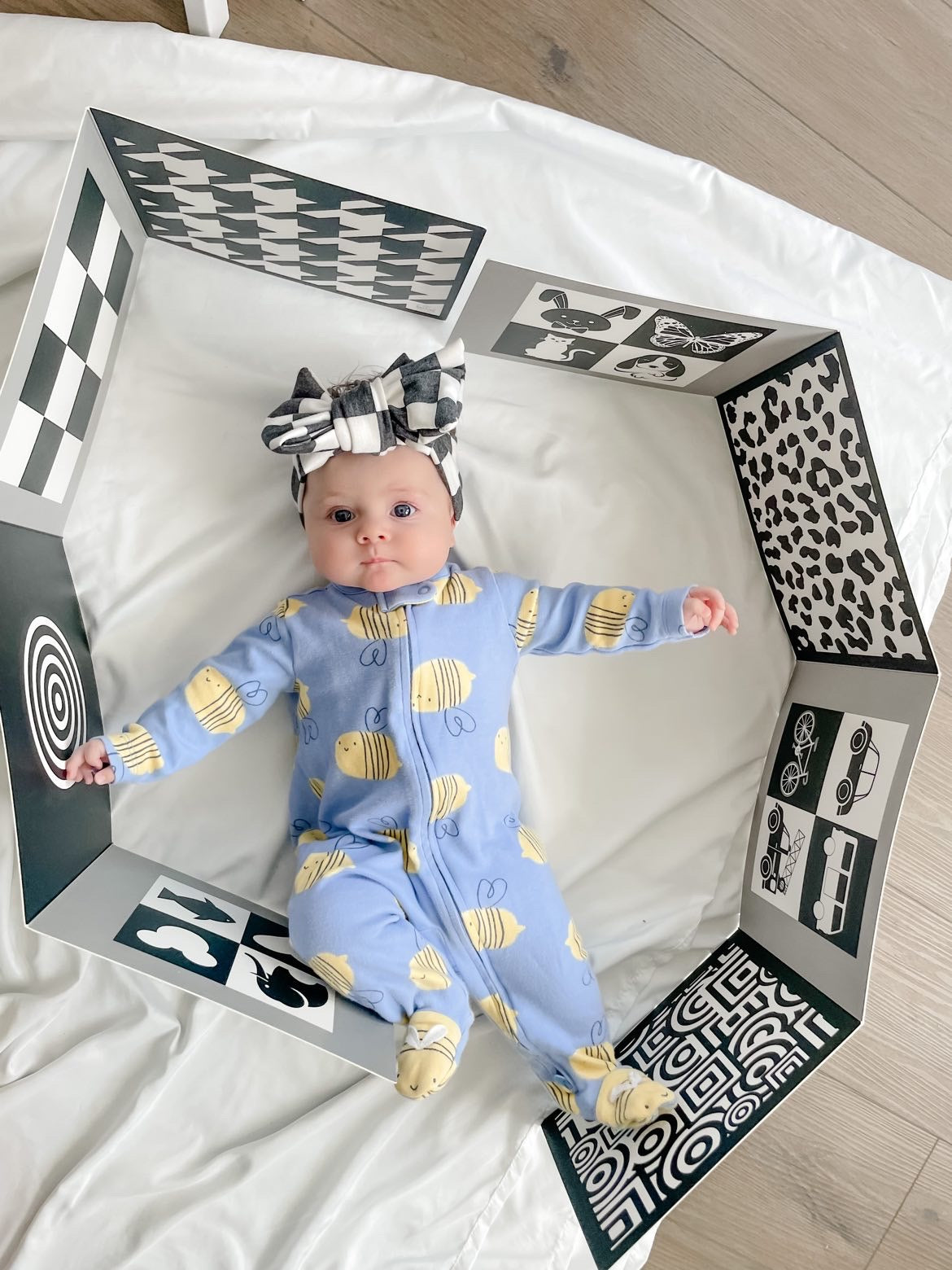The Benefits of Black and White Images for Babies
In the first few months of life, a baby’s world looks very different from ours. While adults see a full spectrum of color, newborns can only focus on strong contrasts. That’s why black and white images are such an effective and developmentally supportive way to engage your baby’s senses during those early weeks.
👶 1. Supports Early Visual Development
Newborns are born with limited vision — they can only focus about 8–12 inches away and see shades of gray. High-contrast black and white patterns stand out clearly, helping babies practice focusing, tracking, and distinguishing shapes. This gentle exercise strengthens the visual pathways in the brain.
🧠 2. Stimulates Brain Growth
When your baby looks at high-contrast images, the light-dark differences send strong signals to the brain’s visual cortex. This stimulation helps build neural connections — essential for later skills such as depth perception, movement, and object recognition.
❤️ 3. Encourages Bonding and Interaction
Placing black and white images near your face or around baby’s play area invites connection. Babies love to study faces and bold patterns; they’ll often stare, coo, or move their hands. This shared visual attention is one of the earliest ways to bond and communicate.
🌱 4. Calms and Focuses Your Baby
Simple, high-contrast visuals can soothe overstimulated babies. Unlike bright toys or flashing lights, monochrome images are gentle on newborn eyes and encourage quiet concentration. Many parents find that a few black and white cards during tummy time keep their baby relaxed and engaged.
🖼️ 5. Easy to Add to Daily Routines
- Place black and white cards near the changing table or cot.
- Use a soft fabric book with bold patterns during tummy time.
- Hang monochrome art near baby’s playmat or bassinet (safely out of reach).
- Alternate patterns weekly to maintain interest.
💬 6. Backed by Research
Studies in infant vision show that babies are most responsive to high-contrast patterns between birth and four months. These visuals help the retina and brain work together more effectively, laying the foundation for healthy vision development.
✨ Final Thought
Black and white imagery may look simple, but to your baby, it’s a world of discovery. These contrasting visuals strengthen eyesight, build brain connections, and create quiet, mindful moments of connection. Whether you use sensory cards, books, or art, high-contrast play is a beautiful start to your baby’s sensory journey.

